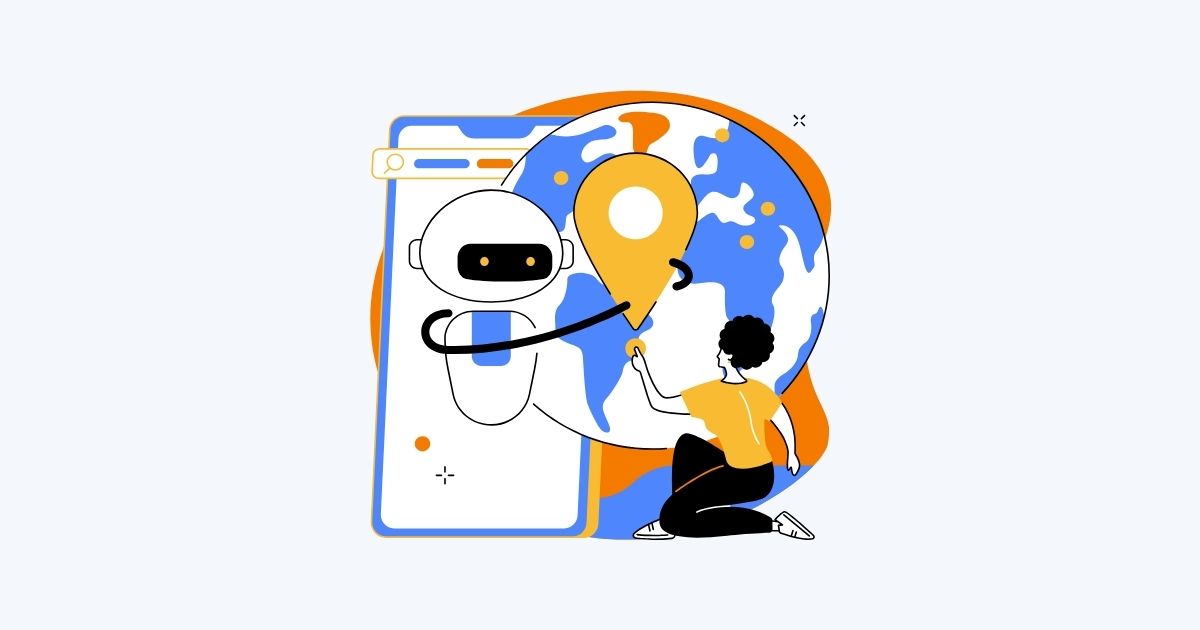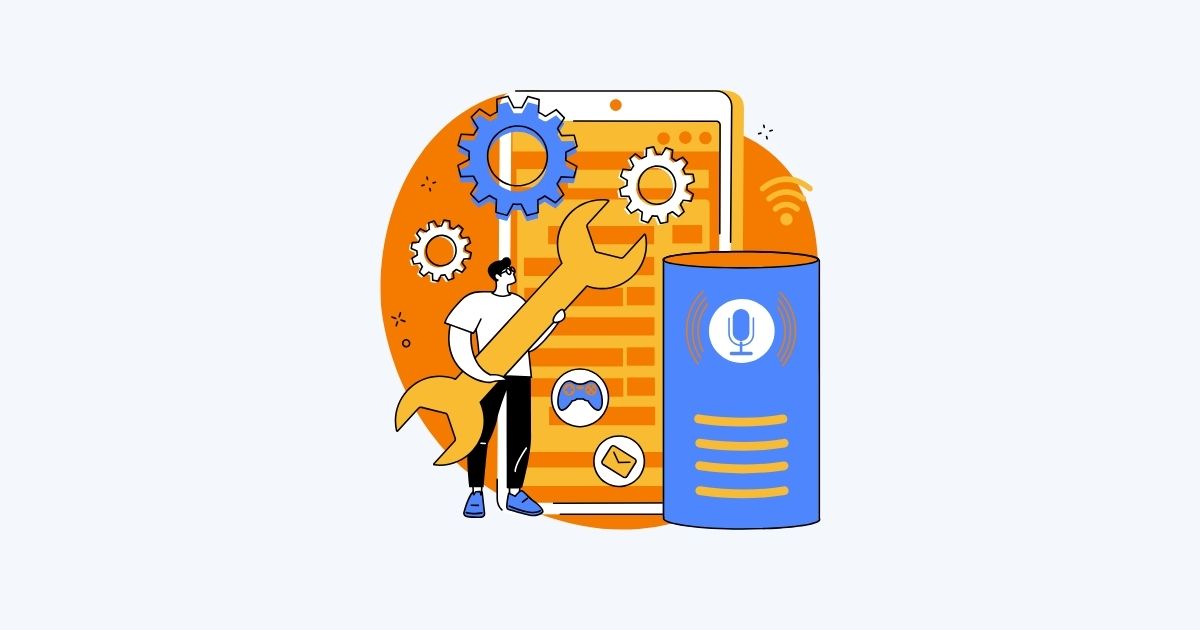It’s like a gold rush for AI Chatbots out there!
Chatbots Market was valued at USD 6.6 billion in 2024 and is projected to grow
- $7.5 billion in 2025 and
- $33.7 billion by 2034
This means an 18.38% growth rate 🎯
But why is that?
The answer is simple: Customers want so.
Statistics say that:
- 77% of customers won’t purchase if there is no chat support
- 95% of consumers believe AI-powered customer support will be a major beneficiary of chatbots.
Last but not least, agents who followed up within two minutes of a chatbot chat were most likely to land a meeting.
It’s obvious that the businesses that invest in AI-powered customer support:
- reduce operational costs
- build better relationships,
- boost loyalty, and stand out in a crowded market.
These are the real powers of enhancing CX with chatbots.
In this article, we’ll discuss how AI chatbots can streamline customer interactions, providing quick and efficient responses while improving overall customer satisfaction.
Let’s dive in🤿
By the way, you can view our AI Chatbot feature here and other AI solutions here.
How AI Chatbots Are Raising the Bar
Today’s chatbots understand intent, context, and nuance. That means faster resolution times and fewer escalations. It also frees up support teams to focus on complex or high-emotion issues where empathy and problem-solving are essential.
Some benefits of AI Chatbots can be listed as follows:
- Response Time: AI chatbots respond instantly, while human reps take an average of 1–3 minutes. Conversational AI can reduce customer wait times by up to 90%, according to IBM.
- Availability: Chatbots offer 24/7 support; human reps work limited shifts.
- Query Handling Volume: Chatbots can handle thousands of chats simultaneously. Human agents are one at a time.
- Consistency: Chatbots provide uniform responses. Humans may vary depending on mood, workload, or experience.
- Cost Efficiency: Businesses can reduce customer service costs by up to 30% using chatbots
- Customer Preference: 69% of consumers prefer chatbots for quick communication
- Scalability: Whether it’s handling 50 or 5,000 conversations, chatbots don’t get tired or distracted. They can respond instantly to FAQs, process returns, track orders, and guide users all without human intervention.
- Reliability: Every customer gets the same accurate answer to a question, no matter the time or volume of traffic.
NLP-driven chatbots provide chatbot automation and smart routing to help businesses personalize their customer support.
AI Chatbots are used for:
- Proactive Support: Advanced conversational AI can detect user behavior (like visiting a troubleshooting page) and offer help before users even ask.
- CRM Integration: AI chatbots can sync with order histories and profiles to give quick, personalized responses—like pulling up tracking info for repeat customers. “Can I have your order number again?”
- Contextual Responses: NLP-driven bots adjust tone and guidance based on the customer type (new vs. returning), creating seamless customer interactions that feel relevant and human.
Call Center Studio’s pay-as-you-go system also provides all types of integration for chatbots: API & CRM Integration and UC

Real-World Cases and Advancements in Chatbot Tech.
You know, ChatGPT is a chatbot, and it’s mind-blowing to think about the tech that makes it work!
What you can do with this AI chatbot really just depends on how far your imagination can go. AI chatbots are now built on cutting-edge innovations like:
- Large Language Models (LLMs): Technologies like GPT-4, Claude, and PaLM power chatbots with human-like comprehension and response generation. These models understand nuance, context, and intent far better than rule-based bots.
- Generative AI: These models create answers based on patterns in training data, enabling chatbots to handle complex, unscripted conversations.
- Multimodal AI: Chatbots can now interpret text, images, and even voice inputs. That enables more natural and accessible interactions.
- Emotion Recognition: NLP-driven chatbots are increasingly using sentiment analysis and emotion AI to gauge how users feel, allowing for smarter escalation and tone adjustment.
- Real-Time Agent Assist Tools: Companies are using chatbots not just for customers but to support human agents with real-time suggestions and responses during live chats. AI Accent neutralization tool and AI Avatars are another life-saving tool for agents to have accent stress while speaking with customers
- Conversational Memory & Personalization: Advanced chatbots now retain context across sessions, offering more chatbot personalization and relevant support with each interaction.
- Omnichannel Integration: Modern bots integrate across platforms—web, mobile, social media, and messaging apps—to ensure a seamless customer interaction. Visit our omnichannel center here to learn more
As AI models improve, chatbots will become even more capable of resolving complex issues, predicting customer needs, and adapting in real-time.
Companies have successfully integrated AI chatbots to give a self-service experience to their customers.
For example, Swedish payments group Klarna implemented an AI assistant that performs the work equivalent to 700 employees, reducing the average resolution time from 11 minutes to just 2. This strategic move not only improved efficiency but also contributed to a 73% increase in revenue per employee over 12 months.
Generative AI enhances the capabilities of chatbots to handle more complex and nuanced interactions.
Companies like Comcast are utilizing large language models (LLMs) to assist agents in real time, resulting in reduced conversation handling times and increased customer satisfaction. Leading brands are already seeing results. Domino’s Pizza and Starbucks already let users order food and drink via chatbot with minimal friction.

Best Practices for Implementing Chatbots
Getting a chatbot or having automated customer service needs a strategy. If you like to start using a chatbot, consider these chatbot best practices:
- Start with clear goals: Identify what problems the chatbot should solve—support ticket deflection, order status, lead capture, etc.
- Map user journeys: Design flows based on how users seek help, not just what you want to promote.
- Train on real data: Feed your chatbot historical support conversations to improve accuracy and intent recognition.
- Enable smooth escalation: Always offer a clear path to a human agent when the bot hits a limit.
- Test and optimize: Regularly review chatbot performance and tweak based on user behavior and feedback.
Customer Experience and Workforce Engagements software helps you through each step above.
When done right, these practices make your chatbot efficient and genuinely helpful.
See the benefits businesses are mentioning about using Call Center Studio AI Tools




